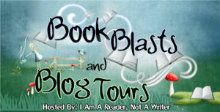by Lee Strauss
Writing the first draft is all about creating raw material to work with in subsequent drafts. I like to look at it as making clay. In order to create a sculpture the sculptor first has to create the clay. I know of a potter who gathers the clay he uses for his master pieces from his own property.
Once you have your story idea, main characters, and you’ve mapped out the major plot points, it’s time to start writing that first draft.
The idea for PERCEPTION came to me while watching a documentary on TV on how science and pseudo science was working to extend the human lifespan. From there I began to wonder how the world would run if some people were genetically modified and others weren’t. How would that effect society for good or evil?
I sketched out two main characters, one on either side of the spectrum and imagined a scenario that would bring the two together. I like to use a three act structure as a guide and so I did some pre-plotting, tagging certain key scenes.
So, take that kind of information and just start writing. Vomit words onto the page. Ideas come as you go. Some of them will be great and some with hit the cutting room floor, but it doesn’t matter. Don’t worry if it’s good, because it’s probably not. Being good is not the point of the first draft. The point is making clay. You need raw material to work with, something you can later poke and prod and massage into a masterpiece.
But that’s not what you’re doing now. With the first draft, you’re making clay.
See that big white blank screen? Type something on it. Even if it’s these words: I don’t know what I’m going to write now, and this is crap, but I will write something, the first words that come to my mind….
Maybe it’s just finger exercise, but it’s something and eventually you’ll write something useful. I promise.
When writing your first draft, try thinking in scenes rather than chapters. I usually ask myself the question, what happens next? Sometimes you have to go and do something physical like go for a walk or vacuum, and while your body is busy, your mind can unlock the next scene–the setting, the people, the situation, and what your characters are saying. When you see it in your head, go to the computer and write it down.
And repeat.
What I don’t do in the first draft is worry too much about character development or minor details I just think, What happens next? I’m making clay.
This process takes several weeks. Even months. (And months)
When I’m done my first draft, when I have a big pile of molding material, I let it sit for a while. Put it in a big plastic bag so it doesn’t dry out (figuratively speaking), eat something with chocolate in it (literally speaking). Give my brain a break; because soon, I turn from the clay maker to the sculptor, and for that, I need a whole new tool-box of tools.
What happens if you don’t make clay? Or enough clay? You get hung up re-writing the first half (quarter?) of your book over and over again. You hit the wall because the beginning is never good enough and you can’t press through to the end-or you’ve painted yourself into a corner plot wise, because the beginning is nailed down and it forces your book to stay on a certain track when it would be better for the story to take an unplanned turn.
See what I’m saying?
ENVISIONING THE SCULPTURE UNDERNEATH THE CLAY
What do I mean by leaving the details until later? For instance, one school of thought (and this is perfectly fine, it’s just not my method), is to write a heavy outline beforehand where you as the writer know practically every scene until the end before you start writing. People who take this approach often like to do thorough character sketches pre first draft as well. They’ll have a long list of questions for their character like what’s their favorite color, season, childhood memory, greatest want/fear/disappointment, etc. Again, if this is your style-go for it!
I’ll tell you why it’s not for me. In my experience, I can’t know the character that well before I start. In fact, I’m only getting to know my characters as I write my first draft. How can I know at the offset what they like to eat for breakfast?
The characters reveal themselves as I write. A lot of the plot will reveal itself as I write the first draft as well.
So, though I don’t go into the first draft with all this information on an excel sheet or flow chart, I’m watching for it as I write. I’m paying attention.
What I’m trying to say is, though I’m making clay, I try to envision the sculpture underneath as I make it. It’s like watching the image of a Polaroid shot come into focus. It’s not instant, like digital images are. It takes time.
Once I’m finished my first draft, I take time to sort out the characters, their motivations, deep felt needs and over all character arc. I look for all my subplots and the arc of my main plot.

Eternal Life is To Die For
Buy Now @ Amazon
Genre – YA SciFi / Romance
Rating – PG13
What doesn’t kill you…
Coming in April 2013
Genre – YA SciFi / Romance
Rating – PG13
More details about the author & the book










0 comments:
Post a Comment